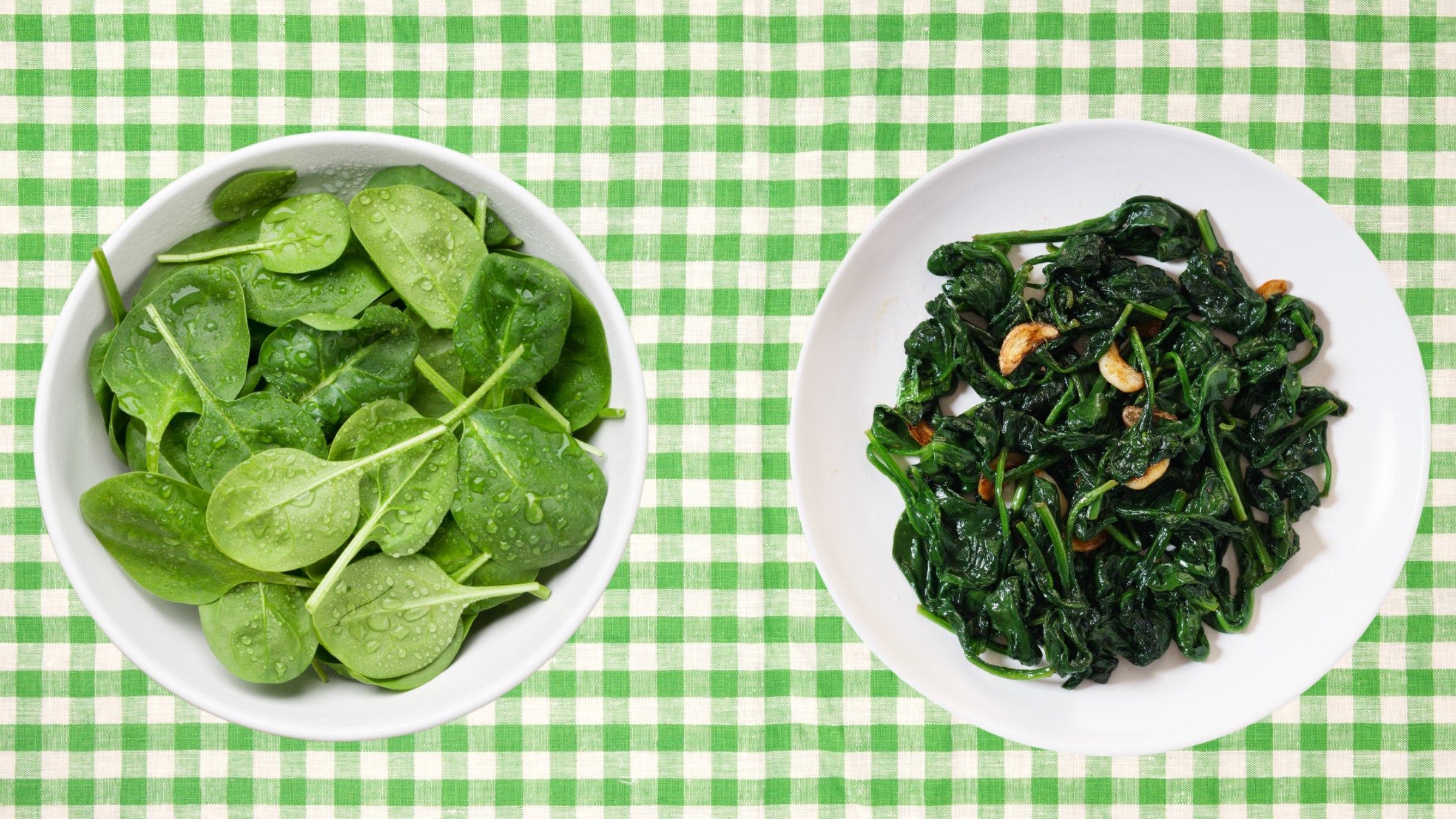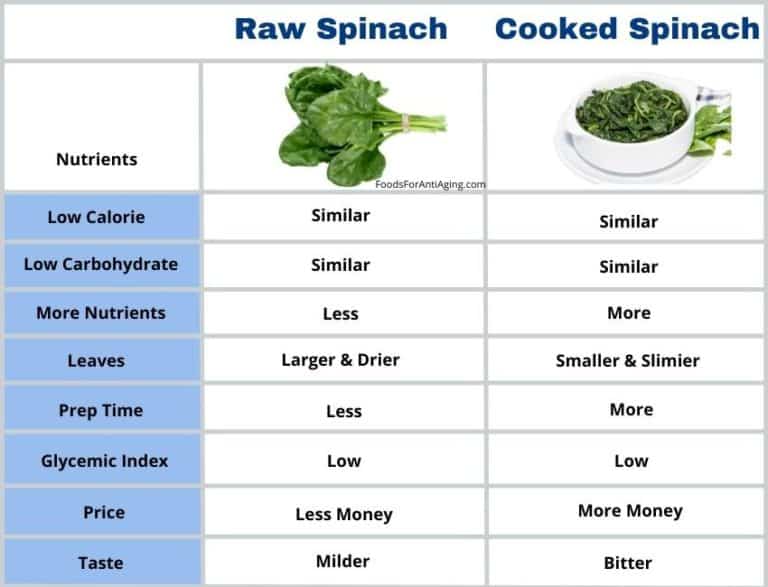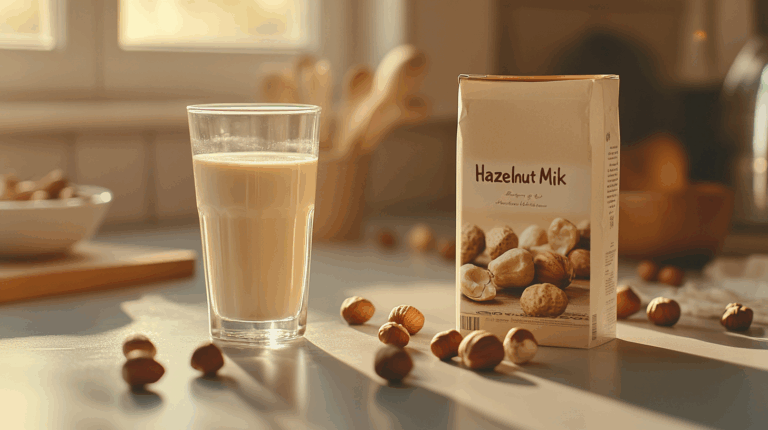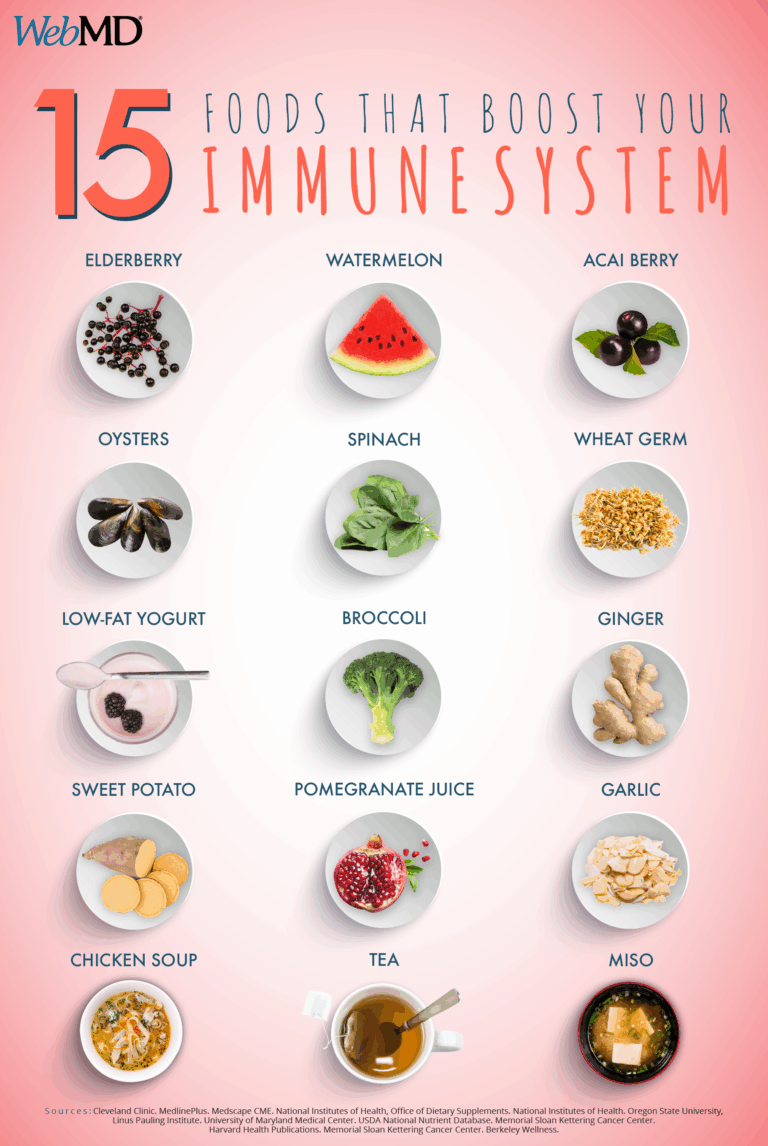The Spinach Enigma: Unraveling the Raw vs. Cooked Debate for Maximal Health
Spinach. The very name conjures images of Popeye flexing his biceps, a vibrant green symbol of strength and vitality. For centuries, this leafy green has graced our plates and nourished our bodies, celebrated for its rich tapestry of vitamins, minerals, and antioxidants. Yet, beneath its unassuming leaves lies a simmering debate that has puzzled health enthusiasts and nutritionists alike: Is spinach better consumed raw, bursting with its fresh, enzymatic life, or cooked, softened and transformed by heat?
This isn’t just a culinary preference; it’s a fundamental question about nutrient bioavailability, the intricate dance between our food and our physiology. For the discerning, knowledgeable individual seeking to optimize their health, the answer isn’t a simple "either/or." It’s a journey into the molecular landscape of spinach, a story of cellular walls, anti-nutrients, and the surprising alchemy of heat. Let us embark on this exploration, peeling back the layers of this verdant enigma to uncover how we can truly maximize spinach’s prodigious health benefits.
The Allure of the Raw: A Symphony of Freshness and Fragility
The proponents of raw spinach champion its unadulterated state, arguing that nature intended it to be consumed fresh, alive, and brimming with its original enzymatic activity. There’s an undeniable logic to this perspective. Raw foods, by definition, retain nutrients that are sensitive to heat, offering a distinct set of advantages.
The Heat-Sensitive Heroes:
- Vitamin C (Ascorbic Acid): Perhaps the most celebrated casualty of heat, Vitamin C is a powerful antioxidant crucial for immune function, collagen synthesis, and iron absorption. Raw spinach is an excellent source, but cooking, especially prolonged boiling, can significantly diminish its content. The delicate molecular structure of ascorbic acid is easily broken down by high temperatures, making raw consumption a clear win for this vital nutrient.
- Folate (Vitamin B9): Essential for cell growth, DNA repair, and red blood cell formation, folate is another heat-sensitive nutrient. While not as dramatically impacted as Vitamin C, cooking can still lead to losses, particularly when spinach is boiled and the water containing dissolved folate is discarded. Raw spinach ensures a higher intake of this crucial B vitamin.
- Enzymes: Raw food advocates often emphasize the importance of natural enzymes present in plants. These enzymes are believed to aid in digestion and nutrient absorption within the body. While the scientific consensus on the direct contribution of plant enzymes to human digestion (given our own robust digestive enzyme systems) is debated, there’s no denying that cooking denatures these delicate protein structures. For those who subscribe to the "living food" philosophy, raw spinach maintains its full enzymatic potential.
- Water Content and Hydration: Raw spinach is naturally high in water, contributing to overall hydration. While this isn’t a "nutrient" in the traditional sense, the crisp, fresh texture of raw spinach adds a refreshing element to salads and smoothies, encouraging greater consumption.
The Fiber Factor:
Raw spinach is rich in insoluble fiber, which acts as a bulking agent, promoting regular bowel movements and supporting gut health. While cooking softens this fiber, potentially making it easier for some sensitive digestive systems to process, raw fiber provides a robust structure that sweeps through the digestive tract.
The Aesthetic and Culinary Appeal:
Beyond the nutritional arguments, raw spinach offers a vibrant crunch and a slightly bitter, earthy flavor that complements a wide array of dishes. It’s an effortless addition to salads, sandwiches, and green smoothies, requiring no preparation beyond a quick wash. This ease of integration often means people consume more of it.
However, the story of raw spinach isn’t entirely a triumphant one. It harbors certain compounds that, while natural, can interfere with nutrient absorption, presenting a compelling counter-narrative for the virtues of cooking.
The Power of the Pot: Unlocking Hidden Treasures and Taming Antagonists
Cooking spinach, far from being a destructive act, can be a transformative process that unlocks certain nutrients and mitigates the impact of others. The application of heat breaks down cell walls, alters molecular structures, and, in some cases, makes the spinach’s nutritional bounty more accessible to our digestive system.
The Bioavailability Breakthrough:
- Iron: Spinach is famed for its iron content, but this iron is non-heme iron, which is less bioavailable than heme iron found in animal products. Furthermore, spinach contains oxalates (oxalic acid), powerful chelating agents that bind to minerals like iron and calcium, forming insoluble compounds that are poorly absorbed by the body. Cooking, particularly blanching or steaming, significantly reduces oxalate levels. Studies show that boiling spinach can reduce oxalates by 30-87%, depending on the cooking time and water volume. By reducing oxalates, cooking can potentially enhance the absorption of spinach’s iron, especially when consumed with Vitamin C-rich foods.
- Calcium: Similar to iron, spinach’s calcium is also bound by oxalates. While spinach is quantitatively rich in calcium, its high oxalate content means that much of this calcium is unavailable for absorption. This is why spinach is often not considered a primary source of bioavailable calcium, unlike dairy or other leafy greens like kale. Cooking, again, by reducing oxalates, can slightly improve calcium bioavailability, though it still won’t be as absorbable as calcium from low-oxalate sources.
- Carotenoids (Beta-carotene, Lutein, Zeaxanthin): These fat-soluble antioxidants are responsible for spinach’s vibrant green hue and are crucial for vision, skin health, and anti-inflammatory processes. While present in raw spinach, their bioavailability is significantly enhanced by cooking. Heat helps to break down the tough cell walls of spinach, releasing these carotenoids from their protein complexes and making them more accessible for absorption. Furthermore, consuming cooked spinach with a source of healthy fats (like olive oil in a sauté) further boosts the absorption of these fat-soluble compounds.
- Vitamin K: While sensitive to some forms of processing, Vitamin K (phylloquinone) is relatively stable under typical cooking conditions. Spinach is an exceptionally rich source of Vitamin K, vital for blood clotting and bone health, and its content remains largely intact even after cooking.
- Fiber (Softened): While raw fiber is beneficial, for some individuals, particularly those with sensitive digestive systems or certain gastrointestinal conditions, the softened fiber in cooked spinach is easier to digest. This can reduce bloating and discomfort, while still providing valuable roughage.
Concentration of Nutrients:
When spinach is cooked, especially through methods like steaming or sautéing that don’t involve significant water loss into a discarded liquid, its volume shrinks considerably. This means that a smaller serving of cooked spinach can contain a higher concentration of certain nutrients (like protein, iron, calcium, and some vitamins) compared to the same volume of raw spinach. It’s easier to consume a larger amount of spinach by weight when it’s cooked.
Pesticide Reduction:
While organic spinach is preferable, conventional spinach can carry pesticide residues. Washing helps, but cooking can further break down some heat-sensitive pesticide compounds, offering an additional layer of safety.
The Nuances of Preparation: How You Cook Matters
The "cooked" category isn’t monolithic. The method of cooking profoundly influences the nutrient profile of spinach.
- Steaming: Often considered the gold standard for preserving nutrients in vegetables. Steaming uses minimal water and moderate heat, effectively breaking down cell walls and reducing oxalates while minimizing the leaching of water-soluble vitamins (like C and folate).
- Sautéing: Cooking spinach quickly in a pan with a small amount of oil is another excellent method. The oil helps to absorb fat-soluble vitamins (A, K, E, lutein), making them more bioavailable. The quick cooking time also helps retain some heat-sensitive nutrients.
- Blanching: A brief dip in boiling water followed by an ice bath. This is highly effective at reducing oxalates but can lead to some loss of water-soluble vitamins if the blanching water is discarded. However, for dishes where you want to tame the bitterness and reduce oxalate load quickly, it’s a good option.
- Boiling: While effective at drastically reducing oxalates, boiling is generally the least recommended method for nutrient retention, as a significant amount of water-soluble vitamins and minerals can leach into the cooking water, especially if it’s discarded. If boiling, try to use minimal water and incorporate the cooking liquid into soups or sauces to retain some of these lost nutrients.
- Microwaving: A quick and efficient method that can actually preserve many nutrients, often better than boiling, due to shorter cooking times and less water usage.
A Deeper Dive: Oxalates – The Primary Antagonist
The role of oxalates cannot be overstated in the raw vs. cooked spinach debate. Oxalic acid is a naturally occurring organic compound found in many plants, including spinach, rhubarb, beet greens, and cocoa. In spinach, it’s particularly concentrated.
How Oxalates Work (and Misbehave):
- Mineral Binding: Oxalates have a strong affinity for divalent cations like calcium, iron, magnesium, and zinc. When consumed, they can bind to these minerals in the digestive tract, forming insoluble complexes (e.g., calcium oxalate).
- Reduced Absorption: These insoluble complexes cannot be absorbed through the intestinal wall, meaning the body excretes them without utilizing the bound minerals. This is why, despite spinach’s high calcium content, it’s not a primary source of bioavailable calcium.
- Kidney Stone Risk: For susceptible individuals, particularly those with a history of calcium oxalate kidney stones, high oxalate intake can contribute to stone formation. When oxalates are absorbed into the bloodstream, they are excreted by the kidneys. If concentrations are high, calcium oxalate crystals can precipitate and form stones.
Cooking’s Role in Mitigation:
Cooking, especially with water (blanching, steaming, boiling), helps dissolve and leach oxalates out of the spinach leaves. Because oxalates are water-soluble, they migrate into the cooking liquid, which can then be discarded. This is a significant advantage of cooked spinach, particularly for those concerned about kidney stones or optimizing mineral absorption.
However, it’s important to note that a healthy individual consuming a balanced diet is unlikely to suffer from mineral deficiencies solely due to spinach’s oxalate content. The human body is remarkably adaptable, and our overall dietary pattern plays a much larger role.
The Gut Microbiome and Spinach: An Unfolding Story
Beyond individual nutrients, the interaction of raw vs. cooked spinach with our gut microbiome is an emerging area of research.
- Raw Fiber: The robust, intact fiber in raw spinach acts as a potent prebiotic, providing fuel for beneficial gut bacteria. This can lead to a more diverse and thriving microbiome, which in turn influences everything from immunity to mood.
- Cooked Fiber: While softened, the fiber in cooked spinach still serves as a prebiotic. For some individuals, the easier-to-digest nature of cooked fiber might allow for more efficient fermentation by gut bacteria, potentially reducing gas and bloating that some experience with large quantities of raw greens.
Ultimately, both forms contribute to gut health, just in slightly different ways, highlighting the benefit of variety.
Individual Considerations: When Context is King
The "better" choice isn’t universal. Several individual factors can sway the balance:
- Digestive Sensitivity: Individuals with conditions like Irritable Bowel Syndrome (IBS) or sensitive stomachs may find cooked spinach easier to digest due to its softened fiber.
- Kidney Stone History: For those prone to calcium oxalate kidney stones, prioritizing cooked spinach (especially blanched or boiled) to reduce oxalate intake is a wise strategy.
- Iron Deficiency: While Vitamin C aids iron absorption, if maximizing iron from plant sources is crucial, pairing cooked spinach with Vitamin C-rich foods (e.g., lemon juice, bell peppers) can be more effective due to reduced oxalate interference.
- Overall Diet: If your diet is generally rich in other high-oxalate foods (rhubarb, almonds, chocolate, sweet potatoes), you might consider cooking spinach more often. If your diet is diverse and balanced, the impact of raw spinach’s oxalates is likely minimal.
- Medication Interactions: Individuals on blood-thinning medications (e.g., Warfarin) need to monitor their Vitamin K intake carefully, as it plays a role in blood clotting. Both raw and cooked spinach are very high in Vitamin K, so consistency in consumption (rather than avoiding it) is key, under medical guidance.
The Verdict: A Symphony of Both, Not an Either/Or Duel
Having traversed the intricate landscape of raw and cooked spinach, the conclusion is clear: there is no single "better" way to consume this nutritional powerhouse. Instead, the optimal approach embraces the strengths of both forms, weaving them into a diverse and balanced diet.
Embrace the Raw:
- For a potent dose of Vitamin C and folate.
- When seeking the crisp texture and fresh flavor for salads, smoothies, or sandwiches.
- To benefit from intact enzymes and robust insoluble fiber.
Celebrate the Cooked:
- To significantly reduce oxalates, enhancing the bioavailability of iron and calcium (though still not a primary source of bioavailable calcium).
- To unlock and boost the absorption of fat-soluble vitamins and antioxidants like beta-carotene, lutein, and Vitamin K.
- For a concentrated dose of nutrients in a smaller volume.
- For easier digestion, especially for sensitive stomachs.
- To broaden culinary possibilities – from creamy gratins to vibrant stir-fries.
The Synergistic Approach:
The true mastery lies in combining both. Imagine a lunch that includes a fresh spinach salad (raw) for its Vitamin C and folate, alongside a side of sautéed spinach (cooked) with olive oil, unlocking its carotenoids and reducing oxalates. Or a smoothie featuring raw spinach, balanced by a dinner with steamed spinach.
Furthermore, consider the pairings:
- Pair cooked spinach with fat: Always add a healthy fat like olive oil, avocado, or nuts when consuming cooked spinach to maximize the absorption of its fat-soluble vitamins (A, K, E, lutein).
- Pair spinach (raw or cooked) with Vitamin C: This helps enhance the absorption of non-heme iron. A squeeze of lemon juice, a side of bell peppers, or strawberries can work wonders.
Conclusion: The Art of Mindful Nutrition
Spinach, in its raw or cooked state, remains an undisputed champion of health. The debate isn’t about choosing a victor, but understanding the intricate biochemical transformations that occur with different preparations. It’s a testament to the complexity of nutrition and the dynamic interplay between food components and our physiology.
For the knowledgeable consumer, this journey through the spinach enigma reveals that the most beneficial approach is one of thoughtful integration and culinary diversity. Don’t limit yourself to one form. Experiment, explore, and enjoy the myriad ways this humble leaf can nourish your body. By understanding the science behind the plate, we move beyond dogmatic dietary rules and step into the art of mindful nutrition, where every bite is an informed choice for maximal health and well-being. The story of spinach, ultimately, is a story of balance, adaptability, and the enduring power of nature’s bounty, waiting to be unlocked in all its forms.







